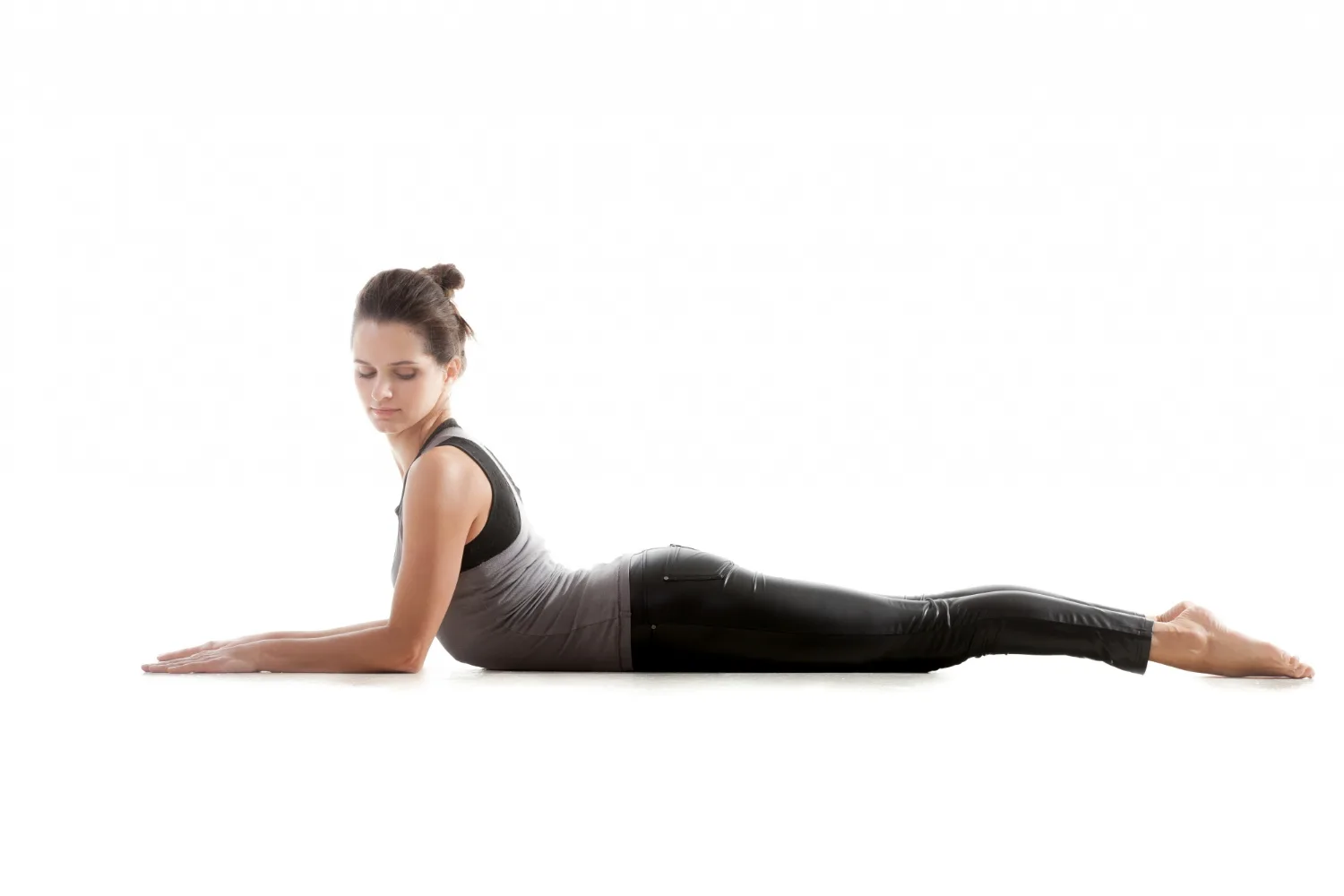Understanding Sphinx Pose
Sphinx Pose, also known as Salamba Bhujangasana, is a reclining backbend pose commonly practiced in yoga.
To practice Sphinx Pose, start by lying on your stomach with your legs extended behind you and the tops of your feet resting on the mat.
Place your forearms on the mat parallel to each other, with your elbows directly under your shoulders.
Press your forearms and palms firmly into the mat to lift your chest and upper body off the ground.
Keep your lower body relaxed and grounded, allowing your hips and legs to rest comfortably on the mat.
It resembles the posture of a sphinx, a mythical creature with the body of a lion and the head of a human or animal.
It is a gentle backbend that provides a stretch to the spine, chest, and shoulders.
It is often used as a preparatory pose for deeper backbends and can be practiced by practitioners of all levels.
Physical Benefits of Sphinx Pose
Practicing Sphinx Pose regularly offers several physical benefits:
1. Spinal Health: It helps to improve the flexibility and strength of the spine, promoting a healthy and mobile back.
2. Posture Correction: This pose stretches the chest and shoulders, which can help correct rounded shoulders and improve overall posture.
3. Abdominal Strength: As you lift your chest off the mat, it engages the muscles of the core, including the abdominals.
4. Relief from Lower Back Pain: It can provide relief from mild lower back pain by gently stretching the muscles of the lower back.
5. Improved Digestion: The gentle compression of the abdomen in Sphinx Pose stimulates the digestive organs, promoting healthy digestion.
6. Relaxation: This pose can help to release tension in the back, neck, and shoulders, promoting relaxation and reducing stress.
Mental Benefits of Sphinx Pose
In addition to its physical benefits, Sphinx Pose also offers several mental benefits:
1. Stress Relief: The gentle backbend and opening of the chest in Sphinx Pose can help to relieve stress and anxiety.
2. Increased Energy: This pose can help to invigorate the body and mind, providing a natural energy boost.
3. Improved Focus: The gentle stretch of the spine and opening of the chest can help to improve focus and concentration.
4. Emotional Balance: It helps to balance the energy in the body and can be beneficial for emotional well-being.
5. Mind-Body Connection: Practicing it can help to cultivate a deeper connection between the mind and body.
Tips for Practicing Sphinx Pose Safely
To practice Sphinx Pose safely, keep the following tips in mind:
1. Listen to Your Body: Pay attention to how your body feels in the pose and modify or come out of it if you experience any pain or discomfort.
2. Engage the Core: As you lift your chest off the mat, engage your core muscles to support your lower back and maintain stability.
3. Don’t Overdo the Backbend: Avoid pushing your body too far into the backbend. Instead, focus on maintaining a gentle and comfortable stretch.
4. Use Props if Needed: If you have tight shoulders or limited flexibility in your spine, you can use props like blocks or blankets to support your forearms.
5. Breathe Deeply: Remember to breathe deeply and consciously , allowing your breath to flow freely and naturally.
Incorporating Sphinx Pose into Your Yoga Practice
Sphinx Pose can be incorporated into your yoga practice in several ways:
1. Warm-up Pose: Use it as a gentle warm-up pose before deeper backbends or asanas that require spinal flexibility.
2. Restorative Pose:It can be practiced as a restorative pose to relax the body and mind during a yoga sequence.
3. Chest Opener: Include Sphinx Pose in your practice to stretch and open the chest, counteracting the effects of rounded shoulders.
4. Daily Stretch: Practice Sphinx Pose daily to maintain spinal health and flexibility, especially if you have a sedentary lifestyle.
5. Meditation Pose: Use Sphinx Pose as a comfortable seated position for meditation, allowing the spine to be gently supported.
Remember to listen to your body and modify the pose as needed to suit your individual needs and abilities.


1 thought on “Salamba Bhujangasana: The Sphinx Pose”